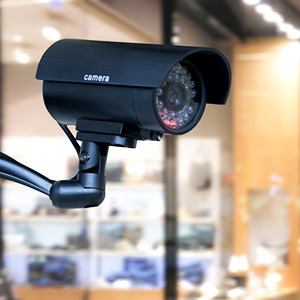
The Jewelers’ Security Alliance (JSA) has noticed a spike in grab and runs, and warns retailers to take basic precautions.
“Of all the crimes we are seeing right now, they are predominant,” says JSA president John Kennedy. “It’s all over the place. There’s just tons of them.”
A grab and run is when a customer is shown product and then runs out the door with it. These thefts are difficult to prevent but typically involve small losses and no violence—though they often leave staff shaken, regardless.
JSA’s key piece of advice to avoid this crime: Only show one piece at a time; if a customer asks to see multiple items at once, that’s a red flag. Retailers might consider a policy of asking to be shown ID before they take out a high-value item. And if a theft does happen, don’t chase after the perpetrator, since they, or an accomplice, may have a gun, or get violent in other ways.
Kennedy attributes the spike to three factors:
• First, with less crowds at the malls and shopping centers, criminals have less of an audience.
• Second, some people are in dire economic straits.
“You don’t have to be a big-time professional to do this job,” says Kennedy. “But people will enter this kind of behavior because they are desperate. It’s all sexes, it’s all races, all ages. Anybody can be a grab-and-run artist.”
• Third, it’s possible that wearing masks has emboldened some crooks, though it’s not clear if there is such a connection.
“A lot of the experts we speak to say it’s possible that the criminals would do it masked or unmasked,” he says. “They did it unmasked for years.”
In most states, it’s mandatory to wear masks indoors. Yet, even though a handful of states are dropping mask mandates, Kennedy—like the National Retail Federation—still believes masks should be required, as customers not wearing them could endanger the health of staff, other customers, and their families.
Retailers should instead check if the person is trying to conceal their identity.
“People should look at the person,” Kennedy says. “Are they also wearing scarves or hats?”
He notes that masks typically don’t do a great job of hiding crooks’ faces, even though the thieves themselves may not know that.
Some stores are having customers temporarily take off their masks outside the store and have their picture taken. Kennedy says his group hasn’t taken a stand on this practice, as there’s no real data on whether it deters criminals, and—depending on how it’s done—it presents certain hazards from a health and customer service standpoint.
He says jewelers should watch out for the following signals that they may be dealing with a grab-and-run thief:
• The customer is talking on a cellphone during the presentation. Criminals often talk to an accomplice outside to see if the escape route is clear.
• The customer declares that price is no object. Grab-and-run thieves sometimes boast that they are an affluent doctor, entrepreneur, athlete, or entertainment figure, or that they have just received an insurance settlement or inheritance.
• The customer asks to see lower priced items and works up to higher and higher priced items in a completely different merchandise category.
• A customer asks to be shown a high-priced item, leaves the store, then returns a little later to see the same item.
Other tips and red flags can be seen on the JSA’s website.
(Photo: Getty)
Follow JCK on Instagram: @jckmagazineFollow JCK on Twitter: @jckmagazine
Follow JCK on Facebook: @jckmagazine







